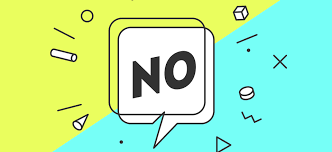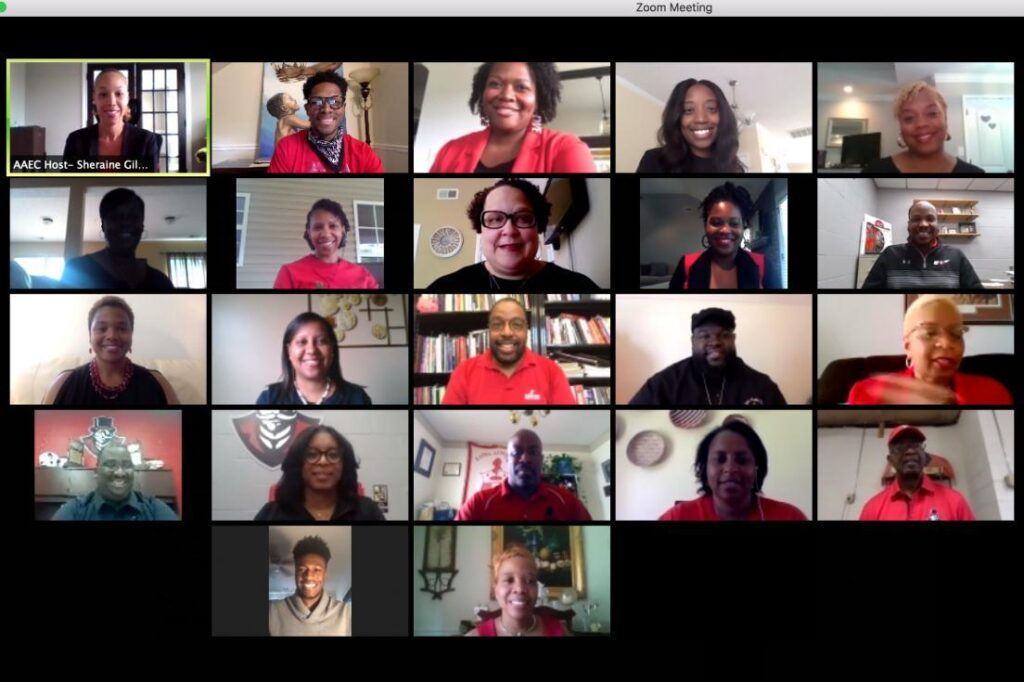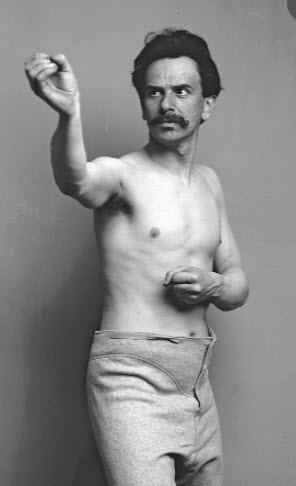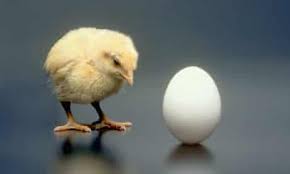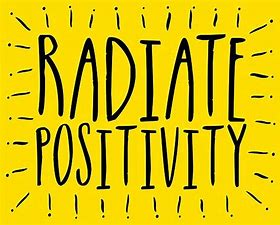A few years ago, I had a slow period at What’s The Idea? and decided to take a sales job. Direct face-to-face sales was something I’d never done. (David Ogilvy would have been proud.) Anyway, my job was that of a field sales rep and I was paid to pitch kitchen remodeling at big box stores and street fairs.
After a while I got good at it and did a little sales training for the company. Following is a sales team presentation I gave, which just came across and thought worth sharing. Enjoy.

I’ve been asked to speak tonight on Success At Street Fairs and also How I Turned Around A Slow Start as a marketing rep. When I first began at KM I used to call in a lot of zeros — and now I’m putting up my fair share of crooked numbers.
Someone once described a co-worker of mine as a guy who spoke in tee-shirt slogans. He was known for memorable snippets of advice and wisdom.
For my talk tonight, I thought I’d borrow from that and maybe update it a bit by sharing some “KM Marketing Memes.” Memes being internet information bites that sound memorable and get passed along.
So here are a few marketing memes that helped me at fairs and in my turn-around. Meme number
1. Make Them Like You. It helps prospects open up when they like you. A smile is great, but is it a warm smile? A real smile? In order to be liked it helps if you’re happy. Are you happy or just smiling? Use humor when you can, it goes a long way to likeability. And likeability is a real word in marketing. It’s not easy to stand around and be happy, especially if you’re having a slow day. So entertain yourself. Make yourself see humor in your surroundings and the people passing by. Make yourself laugh out loud. If you make it easy for people to like you, you’ve taken a step toward a sale. Ask John G. about likeability. Or Arturo.
2. Be Interesting. Think on your feet. Ask yourself “How am I going to get to this person?” After you have someone’s attention, the best way to keep it is to “be interesting.” Make customers talk, make them think. Get them to share. If you see a Montauk tee-shirt, ask “Do you have a kitchen in Montauk? Or do you surf Ditch Plains?” Learning about people lets you be fast on your feet with interesting comments. Bring them in. Being interesting means being topical. Be current. “Happy Friday.” “Did you know today is free slurpee day at 7-11?” Don’t recite the same factoids about products that you use time and again. Find new ways to say them. And use research to come across as having good business sense “50% of US kitchens are white,” “Quartz is in 50% of European kitchens,” “80% of KM’s business is in refacing.” There are lots of ways to make yourself and KM interesting to customers.
3. It’s About Tempo. The tempo of the information you share with customers should be set by them. If someone is in a hurry, also be in a hurry. If someone is just killing time, help them kill time – but don’t lose other customers while doing so. Don’t fire-hose people with information. Watch their faces. Do they want to talk? Or listen? Leave time to listen for sure. Pay close attention to customers and what they want. Also remember, speed kills believability. It can make your pitch sound rehearsed. It should sound to customers like it’s the first time you are saying the words. Sometimes I wait until the customer speaks first – leaving dead air for the first few seconds. This lets them drive and is a good way to gauge tempo.
4. Kitchen Time is Exciting Time. Next to buying a new house, remodeling a kitchen is the most exciting time for a homeowner. Get excited with them. Share that excitement. When a middle class family decides they have enough money to improve their kitchen — to make an investment in their biggest family asset — you can see the pride in their eyes. It’s like a vacation for the sole. Ask about the house. The kitchen. Get specific with your questions. “Does your kitchen get enough light? How is storage? Do you like natural wood or color?” Has it a functional design?” Customers light up when I share with them how exciting it is to remodel the kitchen. Get them talking about it. This can also be a point during which you remind them a great kitchen partner can do the job quickly, on time, and on budget. Sell the KM single source advantage.
5. Educate Don’t Most people don’t like pushy salesman. So if you hear yourself selling, recalibrate. If you can educate a customer in a way that moves them closer to an appointment, you’re much better off. Education is the best way to create preference and action. (Remember when you were 5 years old and an unknown kid would come up to you and say “Do you want to be my friend?” Without educating shoppers, it’s as if we’re asking them “Do you want to buy my cabinets?”) While educating, use specifics about product value… this gives people things they can remember. “We’ve done 50 thousand kitchens. We are direct-to-consumer. No showrooms drives cost out of the business. Refacing is half the price of new cabinets. Lifetime warranty.” Help customers learn about our value and advantages. It helps them decide. Leaders educate. When shoppers learn from KM, they view us as a leader.
6. Read People. Some people in the store are sad. Some are deep in thought. Some are busy. Others have family problems. Read their emotions and be sensitive. Acknowledge it, and decide when not to intrude. Tell crying kids, “It will be okay.” For the happy suggest “Someone’s having a great day.” Be kind and concerned for all. People can feel authentic concern. And it may help you the next time they’re in the store. It’s a lot easier for them to remember you than for you to remember them. Give them a reason to.
7. Memorable Reasons to Believe. Marketing today is too focused on claim, and not focused enough on proof. If you find yourself claiming KM is good at something, pay it off with reasons to believe. Some examples on competitive price: “We wouldn’t be at BJs if we weren’t competitively priced. We make our own cabinets so there’s no mark-up. On quality: “We warranty most products for the life of your home. Our A+ ratings from Customers are 95%. #1 In Qualified Remodeler” By using proof rather than claim, you remove yourself from the bluster of salesmanship.
8. Don’t Be Needy. Customers can smell a needy salesperson. A salesperson who wants the lead or sale too much, or who is too over-the-top, can be off-putting. As the Marketer Magic book says, “be helpful, whether we earn their business or not.” It’s our job to make them want a free in-home design consultation. That can’t be forced, but is may be encouraged. It’s an amazingly valuable gift we’re giving them. Treat it as such. And don’t apologize for our three qualifiers: own the two-home owner sit, don’t apologize — it’s part of a business model that has made us a $25M company.
9. Read the Cart. Every cart that passes by at a BJs tells a story. This meme is a little like the “read people” one pointed out earlier but’s more about the cart. How fast is the car travelling, and what does that mean about the shopper? Is the cart being used as a crutch, holding up an elderly or tired customer? Is it full or empty? Full carts can mean the person may not like shopping or has little time during the week to do so. A cart with a few items may mean a frequent shopper who has extra leisure time. A cake in the cart suggests an impending celebration. Does the cart have squeaky wheels? If so, it might mean the shopper has a high threshold for pain or is lazy. Or hearing impaired. That’s actually a joke. Ish. Do they buy organic products? This might be a cue to talk about refacing as a sustainable solution. If there are 6 gallons of oil in the shopping cart it can mean they are at work. If the shopper is head down, double checking the receipt, they may be very price-conscious – someone for whom the $1500 and $500 promotions are worth pushing hard. I’m not telling you to go all Sherlock Holmes every time a cart passes but little cues can help you start a dialogue. And big cues may help relate to shoppers and inform how to build your case for a KM consult. Lastly,
10. Be Fastidious About Your Display. Maybe this should have been my first point, but I’ll close with it to make it memorable. I set up my display so it’s as eye-catching as possible. Not over-crowded. Not too busy. Like a good web home page, don’t give customers too much to look at. Use your best samples. Keep them beautiful and aligned. I sometimes prop doors up with pennies to make sure they are level. Walk up the aisle to check sight lines. Be fastidious about the cleanliness of your samples and tablecloth. Let the display do a great deal of the work attracting customers. The display is your most important selling tool. And using the 6 foot table, it improves your chance of Quick Setting by 33%.
I don’t expect you to put these ideas on a tee-shirt or share them on the web, but if they help you get one more Quick Set a week – or even just make you a little more spry at a BJs on any given Sunday, then maybe they’ve helped.
Thank you.
Hope some of these insights helps with your sales adventure.
Peace.


